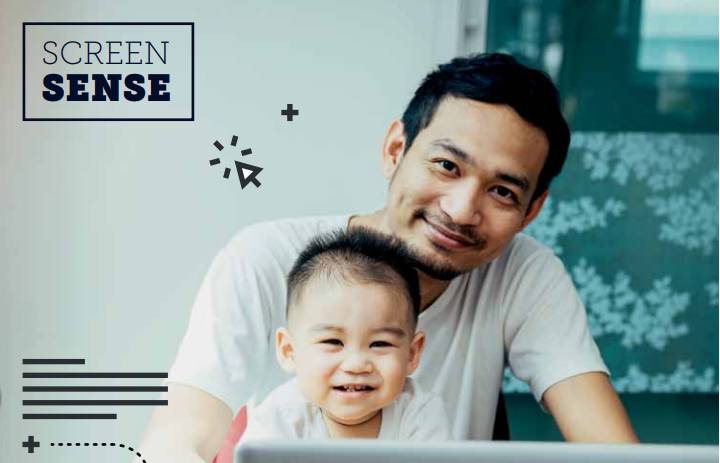Babies today are born into a world of mobile phones, tablets, video players in our cars, and screen technologies that are part of our everyday lives. Naturally, parents wonder about the role screens do—or should—play in the lives of their babies and toddlers, but advice for parents is often unclear or conflicting.
Screen Sense—a new report and series of resources from ZERO TO THREE, the leading nonprofit dedicated to giving babies and toddlers a strong start in life—helps to answer that question (and more!).
Screen Sense makes it clear that a healthy screen media environment for young children is about more than just screen time. It’s also about selecting quality media experiences and engaging in media with them, in order to harness a child’s potential for learning.
The first three years of life can have a greater impact on a child’s life trajectory than any other period. This is the time when children’s brains are developing rapidly—with approximately one million new neural connections formed every minute. Babies and toddlers have a natural ability to learn about the world through their life experiences—like interactions with parents and caregivers and play. If you choose to make screen media a part of your child’s life, there are easy steps you can take to turn screen time into quality time by choosing enriching content and sharing in the experience with your child.
Here’s how you can make the most of screens and in-person interactions, and then connect the two, according to Screen Sense:
Finding Quality Content These guidelines will help you make the most out of screen-based content for your little one.
- Choose high-quality screen experiences for children. Public television stations and media outlets (like PBSkids.org or Sesame Workshop) are trusted sources of high-quality content. Websites like commonsensemedia.org provide suggestions for quality children’s media experiences. And local libraries frequently offer access to e-books, as does the International Children’s Digital Library.
- Look for engaging apps, games, and e-books. When selecting education media for children, remember that the screen experience should have a purpose—to focus a child’s attention on a learning goal. Avoid apps with lots of distracting “bells and whistles” that take children’s attention away from the educational content.
- Choose media experiences with interactive components that ask for children’s active participation and that use strong story lines. Look for apps and other media that invite your child to respond by giving feedback or taking an action. Children learn best from screens when they are “minds on,” meaning that their attention is engaged in content that is neither too familiar (they could get bored—look for that blank stare) nor too challenging (they may become frustrated).
- Join in your child’s screen experiences. Young children find it hard to learn from screens when they are on their own. By participating in media experiences with your little one, you can amp up the learning potential, while also making that moment personally meaningful.

Having Fun and Making Connections These guidelines will help your young children make connections between screens and the world around them.
- Help children make the connection between what they see on a screen and the real world. If a game on the child’s tablet has him moving a ball by dragging his finger, then roll, throw, and bounce balls in the real world. Point out and label objects in real life that children have seen on screens, like animals or vehicles. Use the counting skills your child practiced online as the two of you count napkins for the dinner table.
- Make screens language-rich experiences. Share screen media experiences with your child, just like you do with books—this back-and-forth interaction helps children learn. Ask questions. Talk about the story or characters in the game. Label and describe what you are seeing on-screen.
- Be creative during video chat with your little one. Use games your child enjoys in-person to have fun with video chat partners. Play peek-a-boo with your video chat partner. Use puppets. Try “chasing” each other, playing hide and seek, dancing to music, sharing a snack or giving tickles and hugs through the screen. Share a favorite story together over video chat.
Eliminating Distractions These guidelines will help you and your baby or toddler make the most of the in-person world.
- Limit your own media time when with young children. Consider using the “do not disturb” or silent setting on your phone during playtime or other times you are interacting with each other.
- Avoid background media. Turn off the television, including children’s entertainment shows, when children are playing, when no one is watching, and during daily routines like mealtime.
- Take screens out of the bedroom. Screen use before bed makes it hard for children to fall, and stay, asleep. Use a bedtime routine that includes stories, songs, and cuddles instead.
Learn more about Screen Sense and get the full suite of resources at zerotothree.org/screensense.




